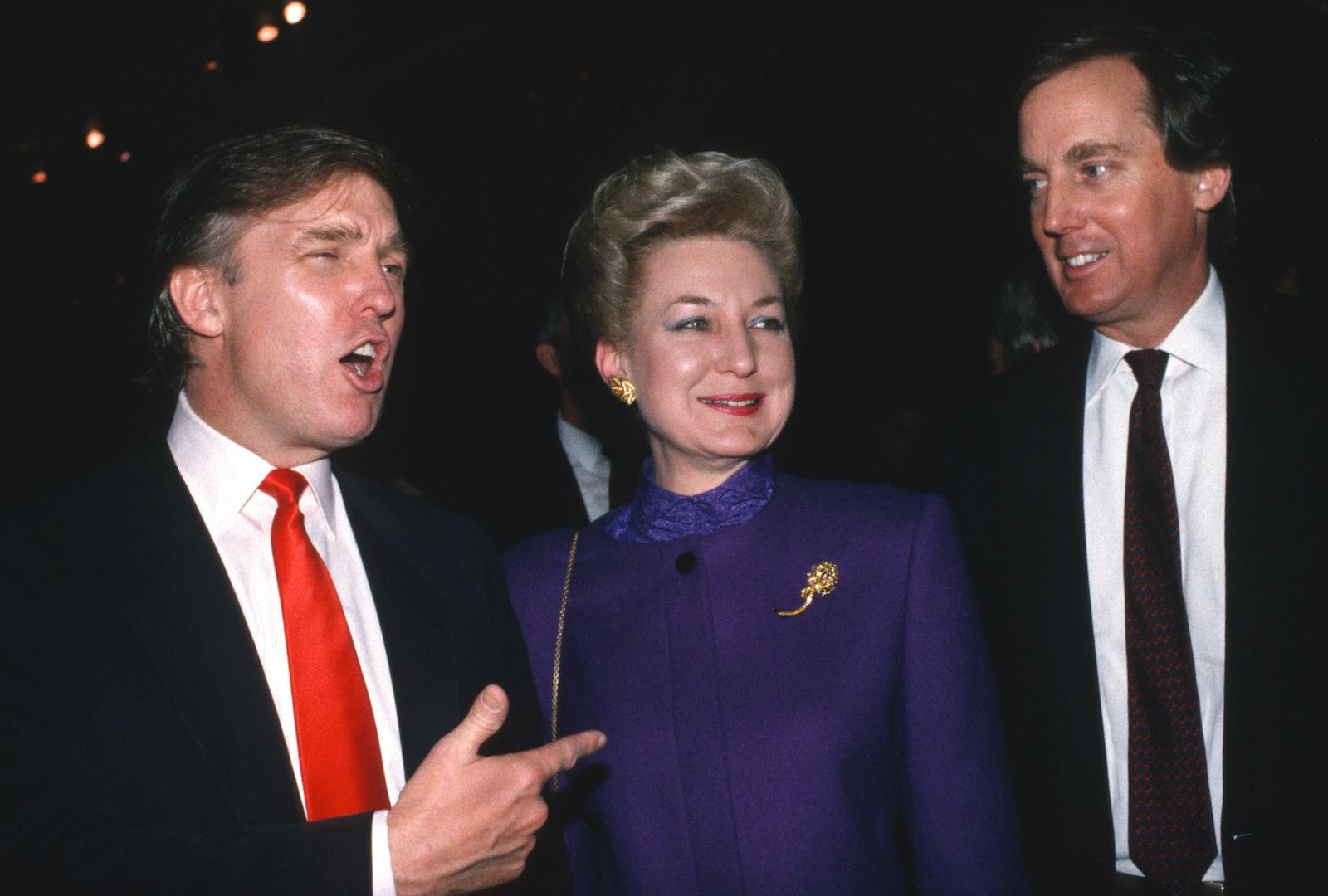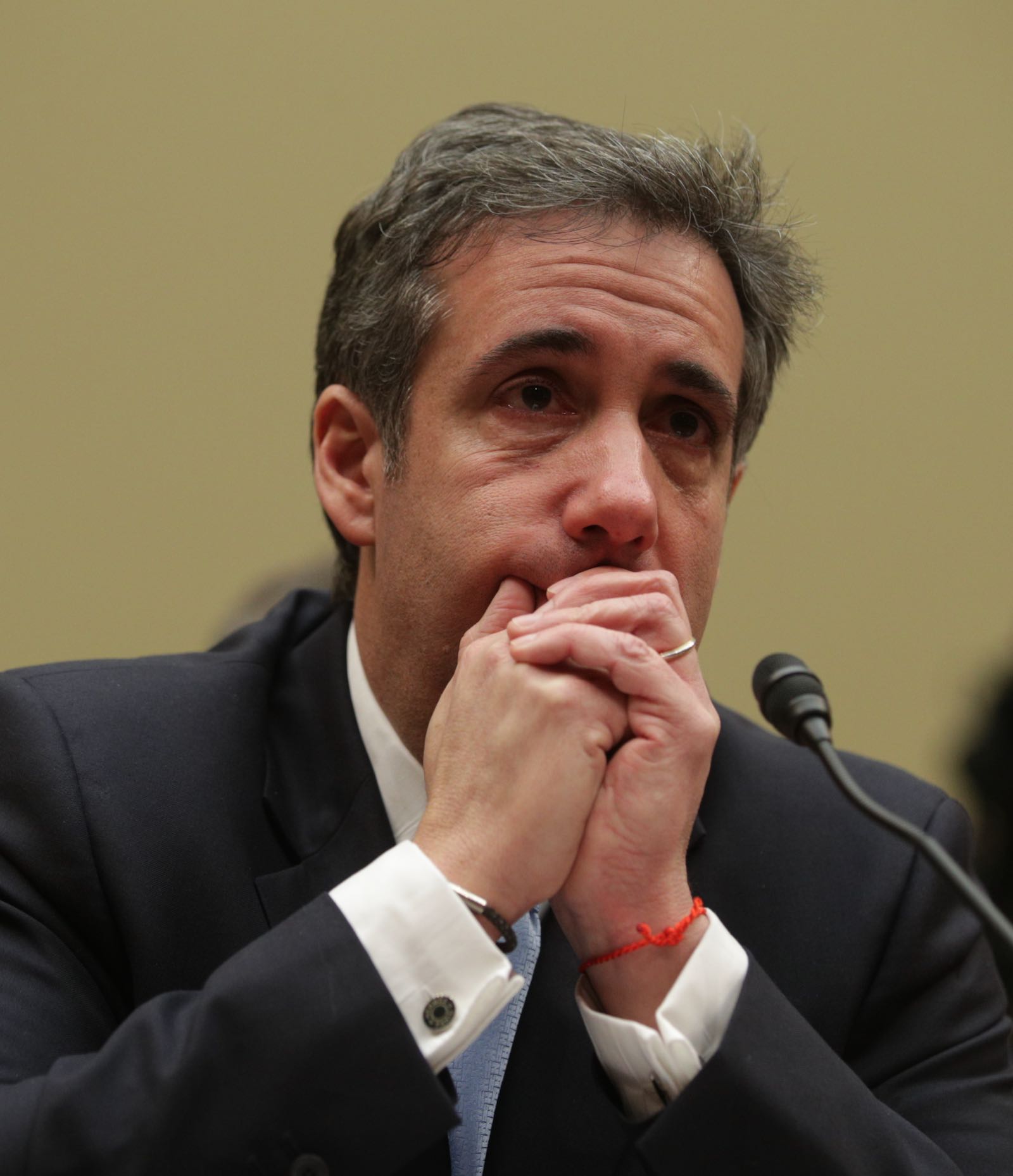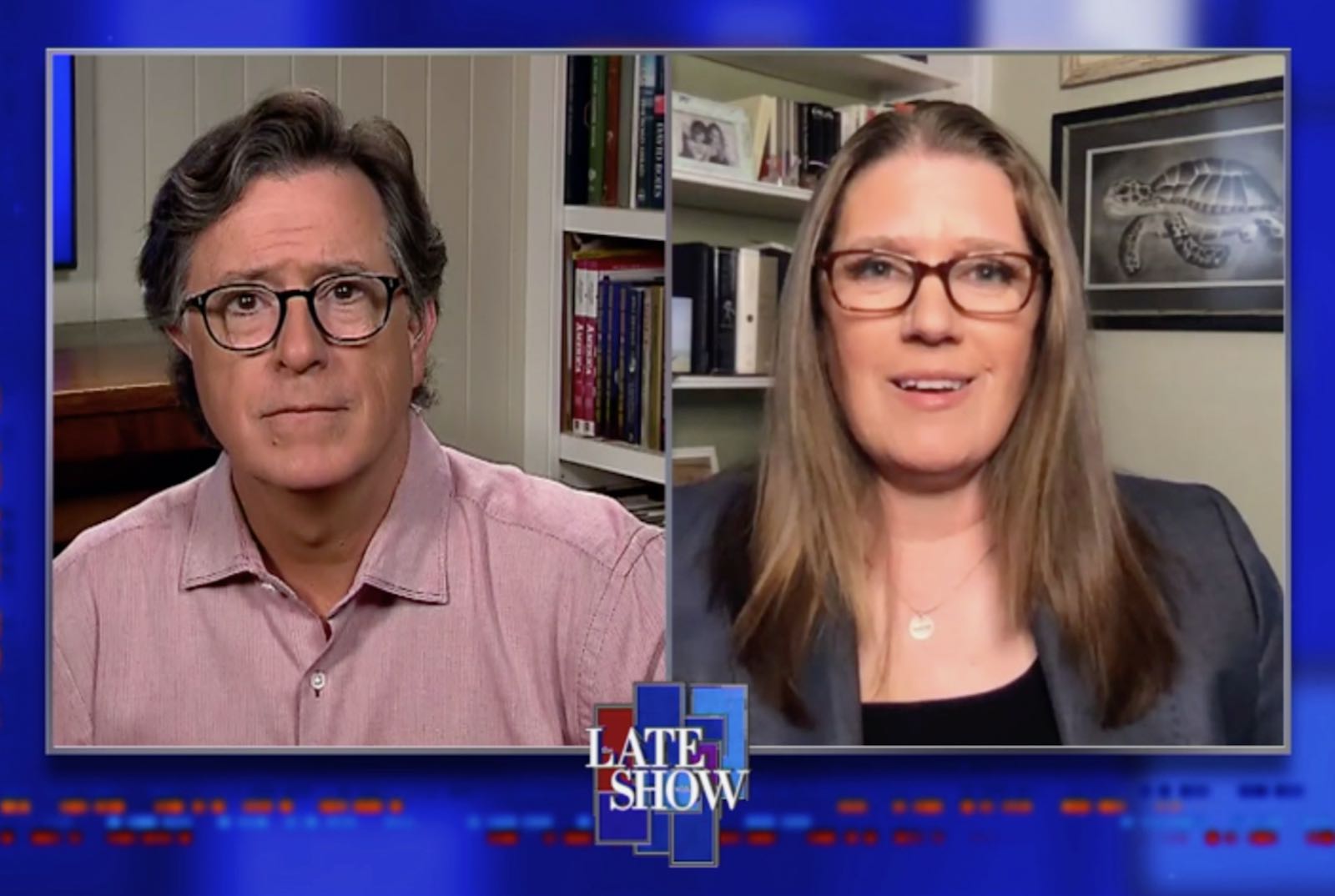Last month, Donald Trump’s niece sued him in federal court.
Trump has been sued hundreds, if not thousands, of times. He has been accused of fraud, deception, cheating, and otherwise stiffing the people, the businesses, and even whole towns he has partnered with. The language of the legal papers is never tame, but even by Trump lawsuit standards, the phraseology of Mary Trump’s lawsuit is blistering. Filed in New York State Supreme Court, it begins:
For Donald J. Trump, his sister Maryanne, and their late brother Robert, fraud was not just the family business—it was a way of life. Beginning in the 1980s, these siblings took control of the New York City real estate empire that their father Fred Sr. had built, and exploited it to enrich themselves at the expense of everyone around them. They concocted scheme after scheme to cheat…
Not long ago, I interviewed Mary Trump for WNYC. Her recent book, Too Much and Never Enough, describes in harrowing detail how her own family had squeezed her and her brother to get them to agree to a diminished settlement of the will of their grandfather, Fred Trump; the scheme by which the siblings shrunk their nephew’s and nieces’s inheritance is the fraud alleged in her lawsuit.
“I’m wondering if you interpret your own experience as…being part of the family business model,” I asked. Mary Trump laughed, and paused. “That’s a really interesting way of putting it,” she said. “Yes, of course. And he…does it with everybody…not just family members.”
Her lawsuit—on which the news reporting came and went in the blink of the eye, as things do these days—is worth dwelling on. It’s a handbook to everything we suspected about her uncle’s business but didn’t actually know for certain, because of Trump’s legal and extralegal silencing techniques: nondisclosure agreements, the threat of lawsuits, and plain bullying. But it’s also a blueprint for everything that we should have understood about his presidency, and that we’ll know even better should he win a second term.
To be sure, Mary Trump’s suit seeks monetary damages; she is, literally, in it for the money. Trump’s spokeswoman dismissed the suit, saying Mary Trump had “discredited” herself. As of this time of writing, lawyers for Donald Trump, Maryanne Trump Barry, and the estate of the late Robert Trump had not yet responded in court to the lawsuit.
Less than a week after Mary Trump filed suit, though, The New York Times published the first of a series of articles based on its reporters’ harpooning the great white whale of investigative journalism: President Trump’s tax returns. The analysis that accompanied the revelation essentially makes the same case as Mary Trump does (she has previously been a source for Times reporting on Trump’s tax affairs).
“The tax returns that Mr. Trump has long fought to keep private tell a story fundamentally different from the one he has sold to the American public,” Times reporters Russ Buettner, Susanne Craig, and Mike McIntire wrote, continuing:
His reports to the I.R.S. portray a businessman who takes in hundreds of millions of dollars a year yet racks up chronic losses that he aggressively employs to avoid paying taxes. Now, with his financial challenges mounting, the records show that he depends more and more on making money from businesses that put him in potential and often direct conflict of interest with his job as president.
For my recent book American Oligarchs, I interviewed scores of former Trump executives, employees, business associates, and partners. Very few wanted to go on the record, for fear of the retaliation that Donald Trump makes real every day. But the stories they told also corroborate the contention of Mary Trump’s lawsuit—that Trump’s entire business model is fraud.
There’s another story these fearful people told, either in their words or in their defeated demeanors or in the complicated ways I had to arrange and conduct interviews. And that is a tale of betrayal, hurt, rejection, and loss. This theme emerged in the remarkable testimony of Trump’s former personal attorney, Michael Cohen, in documents he released and when he sat before the House Oversight Committee in February 2019.
“The boss…loves you,” an intermediary for Trump told Cohen when the president’s aides were trying to convince the former consigliere to keep quiet. “Everybody knows the boss has your back.” But once Cohen broke ranks, he was, in Trump’s own, mob-inflected slang, “a rat.”
Advertisement
“I did the same thing that you’re doing now for ten years,” Cohen told Republican members of Congress. “I protected Mr. Trump for ten years.” Cohen, who admitted repeatedly lying for his boss, declared: “The more people that follow Mr. Trump, as I did blindly, are going to follow the same consequences that I’m suffering.”
Unlike Cohen, who chose to ally himself with Trump, Mary Trump was a blood relation. When she was growing up, she says, her aunts and uncles (including Donald) called her “honeybunch.” But when Mary and her brother, Fred III, hired a lawyer to challenge the then in-progress negotiations over their grandfather’s will, Donald and his siblings retaliated by canceling health insurance coverage for Fred’s son, even though the infant had been in neonatal intensive care.
In July, President Trump tried to preempt the unflattering portrait of him in her book by calling Mary Trump “rightfully shunned, scorned, and mocked her entire life.” The nation has seen this pattern of trash-talking over and over with Trump as president. When his first defense secretary, Jim Mattis, resigned, he was vilified as “a highly overrated general,” who “didn’t do the job.” After his former chief of staff, John Kelly, had endured nearly eighteen months in the post, Trump said he “couldn’t handle the pressure” of the job. And so on.
What is so striking about Mary Trump’s lawsuit is that she is wielding against her uncle the very strategy he has mastered to avoid responsibility for the trail of tears he has left in his wake. His approach is clear: he fights scorched-earth battles in court until he makes his opponents cry uncle. Nowhere is this clearer than in the current lawsuit Trump v. Vance, in which Trump is suing to block Manhattan district attorney Cyrus Vance Jr.’s subpoena of his financial records. Vance’s defense of this litigation has an additional piquancy in light of his 2012 decision to overrule his own prosecutors and halt a felony fraud investigation of Ivanka Trump and Donald Trump Jr. for using grossly misleading figures while marketing units in the Trump SoHo building.
Vance started his current investigation of Trump, his businesses, and his associates in 2019, after it became clear that federal prosecutors in the Southern District of New York would not, because of Justice Department policy about prosecuting a sitting president, pursue a case against “Individual-1”—their name for Donald Trump—for acting in concert with Michael Cohen to make hush money payments to Stormy Daniels that violated campaign finance laws. The Manhattan DA’s initial investigations led state prosecutors to suspect that Donald Trump might additionally have committed crimes of bank fraud, tax fraud, and insurance fraud by inflating the value of his assets when it suited him—for example, when he wanted to get a bank loan—and undervaluing them when it came to paying taxes.
This is exactly what Mary Trump alleges Trump did when her portion of Fred Trump’s estate fell due: she claims that Uncle Donald and his siblings grossly undervalued his assets, enabling him then to award her and her brother a severely devalued portion. This was a strategy Donald picked up from his father, Fred. Even though Mary’s grandfather had been called to account for this practice by both New York state and United States Senate investigators, Donald felt no compunction about using it.
After Trump business activities again came under scrutiny—when DA Vance subpoenaed his accountants, Mazars USA, for eight years of tax returns—the president immediately sued. The first hearing took place on September 26, 2019, the day after the White House released the transcript of the “perfect call” between Trump and President Volodymyr Zelensky of Ukraine—amid the storm that led to the president’s impeachment. Trump lost at the district court level. His lawyers appealed and succeeded in obtaining a stay of the subpoena for disclosure of the tax returns.
Trump then lost at the Second Circuit Court of Appeals, where his lawyer notoriously claimed that Trump could shoot someone on Manhattan’s Fifth Avenue and avoid investigation for it—so long as he had the executive privilege of the presidency. Appealing again, up to the Supreme Court, Trump lost again, with Chief Justice John Roberts writing, in a 7–2 opinion, that the president did not have such immunity. The court sent the case back to the district court. Trump’s lawyers sued once more in federal court, claiming the subpoena was “overly broad,” and “issued in bad faith.” He lost again.
Advertisement
Still, the subpoena is stayed, and it must be assumed that Trump’s lawyers will, as they have intimated, appeal the case (on those different grounds) back to the Supreme Court. It hurts the heart.
When I interviewed Mary Trump in August, I asked her something people often ask me: How does he do this, repeatedly, and keep getting away with it?
“Because he always has,” she responded. “And one of the reasons…has to do with how people buy into a particular narrative. It started with my grandfather and the myth that he created about Donald, that he desperately needed to maintain—as did the New York media in the Eighties and the banks in the Eighties and Nineties.” She added:
Donald has the ability to flood the zones so effectively that it keeps people from focusing on any one thing he does. So we’re constantly losing our focus, and I think when people are distracted, he continues to just keep the narrative, his preferred narrative, out there.
In legal papers, Mary Trump calls part of her uncle’s alleged scheme against her “The Grift,” and the grift is something we’ve seen a great deal in her uncle’s presidency: Trump’s businesses are failing but are kept afloat by a stream of income from lobbyists, corporations, and foreign governments who understand what Trump has made plain: if you pay him, he will favor you (at least for a while). The Times investigation helpfully put dollar signs on this, identifying some of Trump’s money since he’s been president as coming “from licensing deals in countries with authoritarian-leaning leaders or thorny geopolitics—for example, $3 million from the Philippines, $2.3 million from India and $1 million from Turkey.”
What has only recently become clear is how this “grift” plays out in this presidency. The Trump business model, as the Times investigation shows and Mary Trump alleges, works by distracting people with a shiny image, a projection of success, while actually siphoning off real assets—money, power, land, real estate, taxes, health insurance. He persuades people—from associates, family members, and municipalities, to partners, customers, even voters—that they can be part of his success. In reality, he is helping himself to the detriment of everyone else.
Trump is a master at getting enough people to believe in him at any one time to perpetuate the myth: sixty-three million Americans were persuaded in 2016 that he would “drain the swamp” and return jobs to the United States. Despite the worst economy in modern history, the one bright spot in his polling is that he is rated more favorably than Joe Biden on the economy. Right now, an alarming number of his supporters have told news organizations that it’s clear to them the only way he could lose is if there is widespread fraud—a groundless threat that Trump has been amplifying, not shyly, since even before he was president.
Exhibit A in his attempted myth-making, though, is Trump’s handling of the coronavirus pandemic. As we now know, with certainty, Trump knew early on that the virus was extremely dangerous, yet assured Americans it was not and mounted little to no effective defense against it. “I still like playing it down, because I don’t want to create a panic,” Trump told the author Bob Woodward. But we hardly needed to wait for Woodward’s book, because the virus was so obviously dangerous early on, from what we knew of the original Wuhan outbreak, and because Trump himself announced as much from the White House podium as early as March 31: “I’m not about bad news. I want to give people hope. I want to give people a feeling that we all have a chance.” Even after he contracted the virus himself, even as he was hospitalized and treated at Walter Reed, Trump, his handlers, and his doctors kept spinning, kept “giving people hope,” refusing to provide clear information about his condition and assuring the nation he was “doing very well.”
In spite of all we have seen in 2020—more than 200,000 Americans dead from the virus; an economic cataclysm; a trail of destruction for the nation’s schoolchildren; a Justice Department wholly commandeered to help Trump’s allies, like Michael Flynn and Roger Stone, and go after his enemies—there are still enough people willing to believe in the myth that Trump will succeed, for himself and everyone else, that the outcome of the election and the fate of American democracy itself are in doubt.
Although Mary Trump’s lawsuit has yet to wend its way through the courts and has yet to be tested with legal arguments and judicial rulings, there is more than enough in the public record to justify this conclusion: Trump’s business model, identical to his model of exercising presidential power, is, in the words of the complaint, to enrich himself “at the expense of everyone” around him.
There is zero reason to believe that, should he be reelected, that pattern will change.





